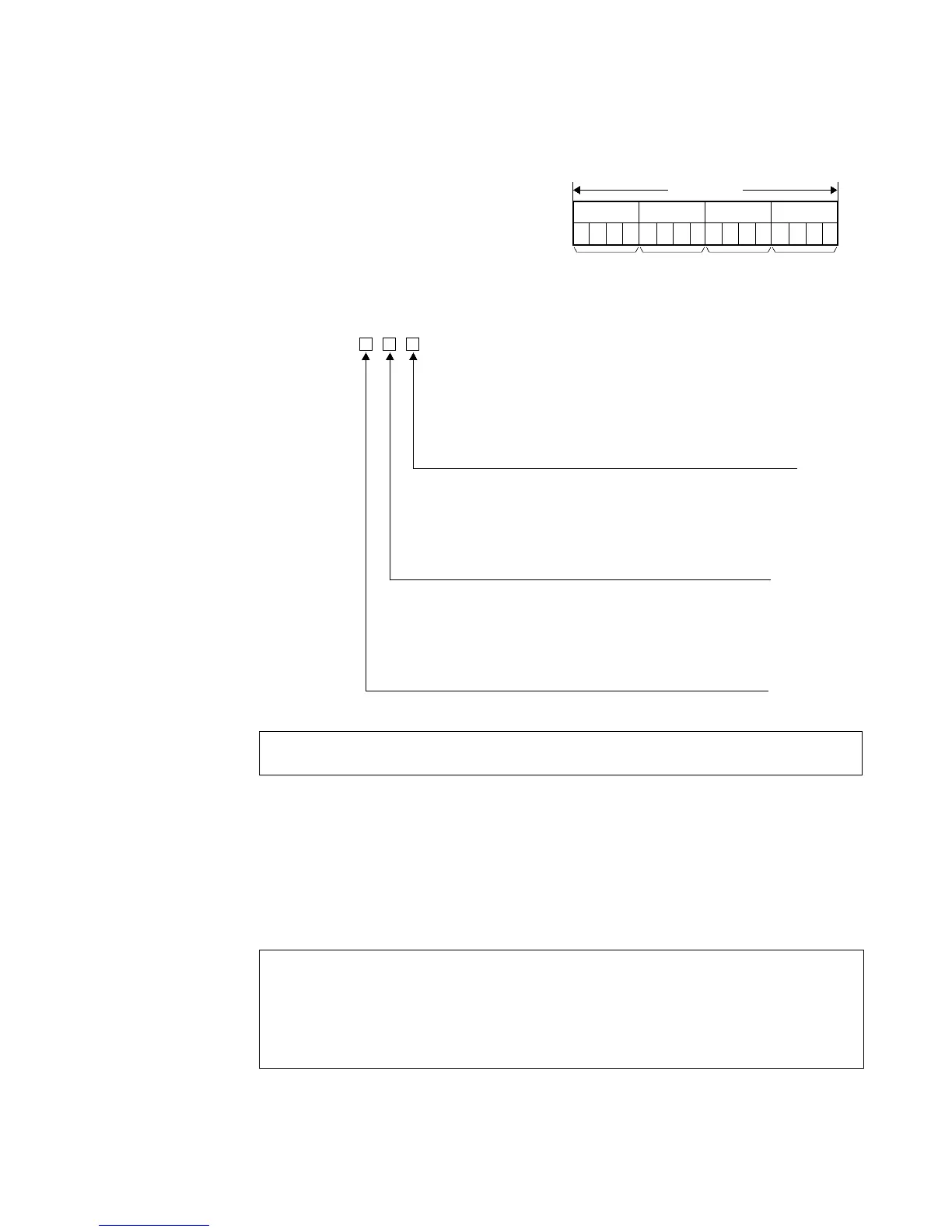163
6-3. Description of High-level Instructions
Description
• The hexadecimal digits in the 16-bit data or in the 16-bit equivalent constant specified by S are
copied to the 16-bit area specified by D according to content specified by n when the trigger
turns ON.
■ How to specify the n
• The hexadecimal digit position of 16-bit data
is specified as shown on the right.
• The n specifies source and destination hexadecimal digit positions and number of digits to be
copied using hexadecimal data as follows:
Note:
■ Flag condition
• Error flag (R9007): Turns ON and keeps the ON state when the area specified using the index
modifier exceeds the limit. The error address is transferred to DT9017
and held. (See notes below.)
• Error flag (R9008): Turns ON for an instant when the area specified using the index modifier
exceeds the limit. The error address is transferred to DT9018. (See notes
below.)
Notes:
• Special data registers DT9017 and DT9018 are available only for FP1s with CPU
version 2.7 or later. (All FP1s with a suffix “B” on the part number have this function.)
• When using special internal relay R9008 as the flag for this instruction, be sure to
program the flag at the address immediately after the instruction.
• Refer to page 223, “8-3. Table of Special Internal Relays”, for details about error
flags.
• If the value for 1, 2, and 3 is 0, such as “H0000” in the example program on the
previous page, use the short form, “H0”.
